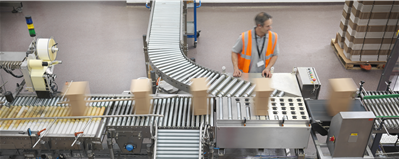
Smart workflows do so much for printers: cut inefficiencies, increase capacity, reduce costs, open up new services and establish better connections with customers, for starters.
But only if those workflows actually work.
A well-optimized workflow is a thing of beauty, and its presence is made conspicuous by absences: the absence of friction, bottlenecks, backlogs and headaches. It’s only when cracks appear in a process that we see the imperfections.
With growing pressure to deliver more jobs in less time, efficiency is high on the list in print facilities everywhere. Master workflows and you’re striding towards that goal.
So anything bad for workflow health is bad for business. To keep operations on a profitable track, it pays to identify workflow threats—the earlier the better.
Here are five of the deadliest workflow jams to look out for, and tips for turning them around:
- Wasted web potential
Web portals need to be more than attractive web-to-print storefronts. They minimize the steps it takes for customers to specify their requirements. Without that streamlining, you’ll waste resources dealing with unstructured customer queries and manual job estimations.
Make life easier for your customers and yourself by letting them choose from clear format and pricing options online. Then, when they return, they can re-order jobs based on past preferences. That means faster service, with fewer errors.
- Sluggish prepress
 Some of the most resource-intensive tasks take place before a job actually feeds into the printer, so more time wasted in prepress is less time spent generating revenue.
Some of the most resource-intensive tasks take place before a job actually feeds into the printer, so more time wasted in prepress is less time spent generating revenue.
Like it or not, it’s often inefficient, manual decision-making that costs money during these preparation stages.
Automate tasks like file inspection, pre-flighting, error-checking, imposition and cropping, and you’ll shave valuable time off these upfront processes allowing you to reallocate it into other parts of your business. Configure hot folders to optimize the most important job types and reduce touches wherever possible.
The sooner a job is on the press, the sooner it’s off and you’re ready for the next one.
- Dispersed variable data
Personalization gets results, so customers are incorporating more variable data into their print and cross-media campaigns whenever they can. That’s a great opportunity to prove your value as a printer with the digital skills of a marketing services provider. But it’s also a chance for bottlenecks to appear if your data management isn’t under control.
To avoid conflicting information, your Variable Data Printing processes should be designed, executed and measured using a single solution. With the right print server and production suite variable jobs can be created in minutes instead of hours or days. And to ensure transparency, integrate web-to-print with your variable data system so jobs can be tracked and reported in one place.
- Low visibility
Nothing kills workflows like blind spots. If you don’t know where jobs are in the print journey, you risk overlooking pain points and missing out on opportunities to improve.
This means having central dashboards that bring all relevant information together for your staff to monitor, but it also means keeping the customer informed throughout.
In the time between placing an order and receiving the completed output, customers should be kept up to speed with job status notifications, whether they’re sent by email or viewed online. Likewise, automatic job ticketing and error notifications keep your staff informed of any workflow issues as they arise, so they can prevent a speed bump from becoming a roadblock.
- Workflow silos

Set up great workflows for individual processes and you’ll save time at each stage, but put all the pieces together and there’s a good chance you’ll find gaps at the seams. A chain is only as strong as its weakest link, and an automated workflow loses strength when it relies on human touches to bind it together.
Silos can have deep foundations. You may have traditionally covered all your needs with separate workflows for digital monochrome, color and offset presses, but take a step back and redundancies start to show. The best-automated job in the shop will stop dead if the finishing process isn’t automated and integrated as well.
Any workflow jam can slow you down and siphon away profits. All of them put together can make a serious dent in your business. Eliminate them and you’ll see all the benefits that streamlined, automated workflows can deliver.
Learn how you can make your work flow better with smart workflow software.




Comments are closed.